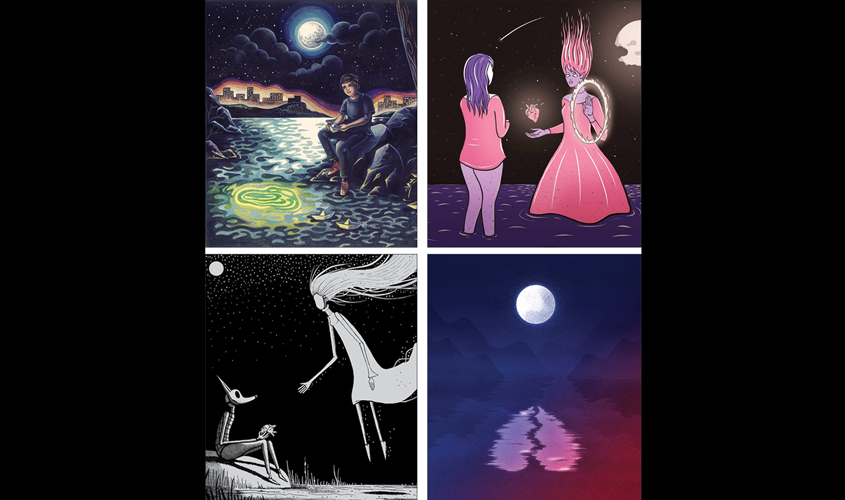In this competition, participants were asked to add a new line each to the original sentence and help carry the narrative forward. Every day for seven weeks, thousands of participants submitted new sentences, one of which was declared as the winning sentence. The winner was adjudged by an online voting system where people all over the country were asked to vote through the project’s website. Once the storyline was uploaded to the website, it went through a pre-moderation process to make sure that it did not contain any offensive language or content. After that, the winning sentence was interpreted and illustrated by seven digital artists from both India and the UK.
Talking about the initiation of such a project, which involved both Indian and British citizens, Neil Pymer, Interactive Creative Director, Aardman, says, “The idea for ‘Saptan Stories’ came from a brief tendered by the British Council for a digital project to compliment the UK-India Year of Culture 2017. We begin to think of all the possible ways that a project could unfold, whittling it down to a core idea. For this brief it was the simplest of these ideas that stood out, which was to base it around the game ‘Consequences’, where the previous line of a story influences the next.”
Pymer also wanted to keep every aspect of the project around the word Saptan—the Sanskrit term for the number seven. He says, “When we started creating the project, it was important for us to root the project thematically; the number seven started to become a recurring symbol and inform elements of the project, why we chose to have seven artists, telling seven visual stories, over seven weeks. It’s a number that has significance in Western cultures, Eastern cultures, and religions the world over. The concept of ‘Saptan Stories’ was created by Jake Manion, a contemporary of mine, who developed the original seed of this project.”
Alan Gemmell, Director, British Council India, spoke to Guardian20 about his interest in making this project run digitally. He said, “We aimed to inspire creative writing, thinking and participation. A crowdsourced project invites thousands of minds, and digital platforms are becoming more and more interactive as opposed to the earlier trends of one-way communication. It attracts maximum participation and allows room for multiple mindsets to work.”
Indian artist Adrita Das, who was one of the participants, spoke about the tricky characteristic of making an artwork from a sentence. She said, “The most challenging aspect was that I was unsure of what my illustration style would look like for the project, especially since the context of the story was not established. After working as an illustrator for the past two years, I’d grown quite tired of the medium and wasn’t able to get myself to enjoy drawing the same way I used to. With ‘Saptan Stories’, I decided to give it one more try as the creative brief was quite open-ended and I wanted to see if I was able to establish a style once again. Also, it has been rewarding to watch the work of other artists on the same panel and to see how integral drawing is to their lives, however small or inconsequential the final outcome may be.”
One of the UK-based artists selected by Aardman Animations, Gavin Strange, told us about his involvement with the project. He said, “Someone from Aardman approached me in person to see if I’d like to work on this project. The project sounded really exciting and an opportunity to test my normal iterative process, with it being such a tight timeframe to illustrate in, together with six other artists spanning two countries.”
He added, “I faced a mixture of fear and excitement at the prospect of the short time frame where I had to create the work. But the process was quite fulfilling.”
The story and artworks will be on the Saptan Stories website for everyone to see and access. Alan Gemell wants to create a spirit of mutual appreciation between India and the UK through this project. He said, “The purpose of UK-India 2017 Year of Culture is to increase the appreciation of contemporary UK in India, and vice versa, so that there is a greater focus, depth and relevance to the long-standing relationship between the two countries. 2017 will see an incredible line-up of cultural events and activities in India organised by the British Council, and a similar programme in the UK will be organised by the Government of India.”

